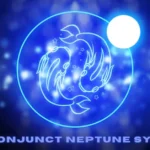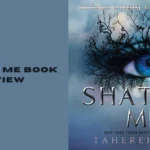Introduction to Pulsamento
Welcome to the world of Pulsamento, where art beats with a rhythmic pulse that captivates the soul. This dynamic and vibrant artistic concept transcends mere visuals to evoke a sense of movement and life in every brushstroke. Join us on a journey through history, explore its elements, discover famous artists who breathe life into their creations with Pulsamento, and learn how you can infuse this heartbeat into your own artwork. Let’s dive into the pulsating realm of artistry together!
History of Pulsamento in Art
Imagine stepping back in time, where the beat of pulsamento first echoed through the art world. It all began as a revolutionary concept – a rhythmic heartbeat captured on canvas or sculpted into form. Artists sought to infuse their works with life and movement, inspired by the natural cadence of existence.
From ancient civilizations to modern avant-garde movements, pulsamento has endured and evolved over centuries. Each artist brought their own interpretation to this rhythmic pulse, shaping it into a unique expression of creativity. The history of pulsamento is a tapestry woven with threads of passion, innovation, and boundless imagination.
As art forms shifted and styles changed, pulsamento remained a constant undercurrent fueling artistic vision. Its presence can be felt in every brushstroke, every chisel mark – an invisible yet palpable force guiding the creation process. Through the ages, artists have embraced pulsamento as a vital element in their artistic journey towards self-expression and connection with their audience.
The Elements of Pulsamento in Art
When it comes to exploring the elements of Pulsamento in art, one cannot overlook the importance of rhythm. Rhythm is the lifeblood that pulsates through a piece, guiding the viewer’s eyes and emotions along a visual journey. The repetitive patterns and movements create a sense of harmony and continuity within the artwork.
Another key element of Pulsamento is energy. Energy flows through each brushstroke or sculpted form, infusing the piece with vitality and dynamism. This dynamic energy captivates viewers, drawing them into the rhythmic heartbeat of the artwork.
Color plays an essential role in conveying Pulsamento in art as well. Vibrant hues can evoke different emotions and moods, enhancing the overall rhythm and energy of a piece. The careful selection and arrangement of colors contribute to creating a visually stimulating experience for viewers.
Texture also adds depth to Pulsamento-inspired artworks by engaging multiple senses beyond just sight. Whether smooth or rough, texture invites viewers to explore the surface physically or mentally, further immersing them in the rhythmic world created by the artist.
Famous Artists Who Use Pulsamento
Step into the world of art and witness the captivating works of famous artists who have mastered the pulsating rhythm of Pulsamento.
Pioneering artist Sonia Delaunay embraced Pulsamento in her abstract compositions, using bold colors and geometric shapes to create dynamic visual experiences that resonate with energy.
The iconic painter Wassily Kandinsky delved into Pulsamento through his unique blend of form and color, expressing emotions and ideas through rhythmic patterns that seem to dance across his canvases.
Contemporary artist Beatriz Milhazes infuses her vibrant artworks with pulsating movement, drawing inspiration from Brazilian culture and nature to create intricate designs that pulse with life.
Exploring the works of these renowned artists can inspire you to incorporate Pulsamento into your own creations, allowing you to tap into the rhythmic heartbeat of art in a truly unique way.
How to Incorporate Pulsamento into Your Own Artwork
Looking to infuse your artwork with the captivating rhythm of pulsamento? Here are some tips to help you incorporate this dynamic element into your creations.
Start by exploring different ways to represent movement and energy in your art. Experiment with bold, fluid brushstrokes or vibrant colors that evoke a sense of vitality and motion.
Consider incorporating repetitive patterns or motifs in your pieces to create a sense of rhythmic pulse. These recurring elements can help establish a visual beat that draws viewers into the heart of your composition.
Don’t be afraid to play around with contrasting textures and shapes to add depth and dimension to your work. Embrace the ebb and flow of pulsamento by layering different elements that interact harmoniously on the canvas.
Remember, pulsamento is all about capturing the essence of life’s heartbeat through artistry. Let yourself be guided by intuition and emotion as you channel this rhythmic energy into your own unique creations.
Impact and Influence of Pulsamento on the Art World
The impact of Pulsamento on the art world is profound, resonating with artists and audiences alike. This rhythmic heartbeat brings a dynamic energy to artworks, captivating viewers and stirring emotions within them.
Pulsamento has influenced various art movements, from abstract expressionism to kinetic art, pushing boundaries and expanding creative possibilities. It challenges artists to explore rhythm and movement in innovative ways, creating visual experiences that engage the senses on a deeper level.
Through Pulsamento, artists can convey emotions and ideas with pulsating vitality, infusing their creations with a sense of life and motion. This unique artistic approach has inspired new generations of creatives to experiment with rhythm and tempo in their work, leading to groundbreaking innovations in the art world.
As Pulsamento continues to make its mark on contemporary art practices, its influence shows no signs of waning. Artists are embracing this rhythmic heartbeat as a powerful tool for self-expression and communication, reshaping the landscape of the art world one pulsating artwork at a time.
Conclusion: Embracing the Rhythmic Heartbeat of Pulsamento in Art
Embracing the Rhythmic Heartbeat of Pulsamento in Art
The pulsating energy of Pulsamento has been a driving force in art for centuries, infusing creations with dynamism and vitality. From the early origins rooted in Italian Futurism to its modern interpretations by contemporary artists, Pulsamento continues to captivate audiences worldwide.
As an artist, incorporating Pulsamento’s into your own work can breathe new life into your creations. Experiment with rhythmic patterns, dynamic compositions, and vibrant colors to harness the pulsating essence of this artistic movement.
By embracing the rhythmic heartbeat of Pulsamento’s in art, you are not only honoring its rich history but also contributing to its ongoing legacy. Let the pulse of creativity guide your hand as you explore the boundless possibilities that this captivating style offers.
In every brushstroke and every line drawn, let the spirit of Pulsamento’s inspire you to create art that pulses with life and energy. Embrace this rhythmic heartbeat and watch as your artwork comes alive like never before.
FAQs
What is pulsamento’s in the arts?
Pulsamento’s refers to the rhythmic foundation that adds dynamic movement and vitality to artistic expressions like painting, dance, and music.
How does pulsamento’s enhance artistic creativity?
It provides a rhythmic structure that imbues art forms with a sense of pulsating energy, capturing the essence of movement and life.
What are examples of pulsamento’s in different art forms?
In painting, it can be seen in the rhythmic brushstrokes; in dance, it manifests through the rhythmic patterns of movement; in music, it’s the heartbeat of the composition.
Why is pulsamento’s significant in artistic expression?
It connects the audience to the emotional and visceral aspects of art, creating a rhythmic resonance that enhances engagement and impact.
Can pulsamento’s be consciously applied in art creation?
Yes, artists can intentionally incorporate pulsamento’s by focusing on rhythmic elements, such as repetition, tempo, and cadence, to evoke specific emotional responses and intensify artistic expression.







